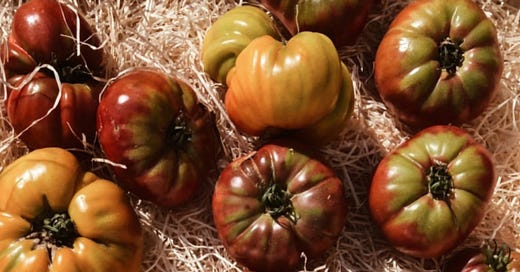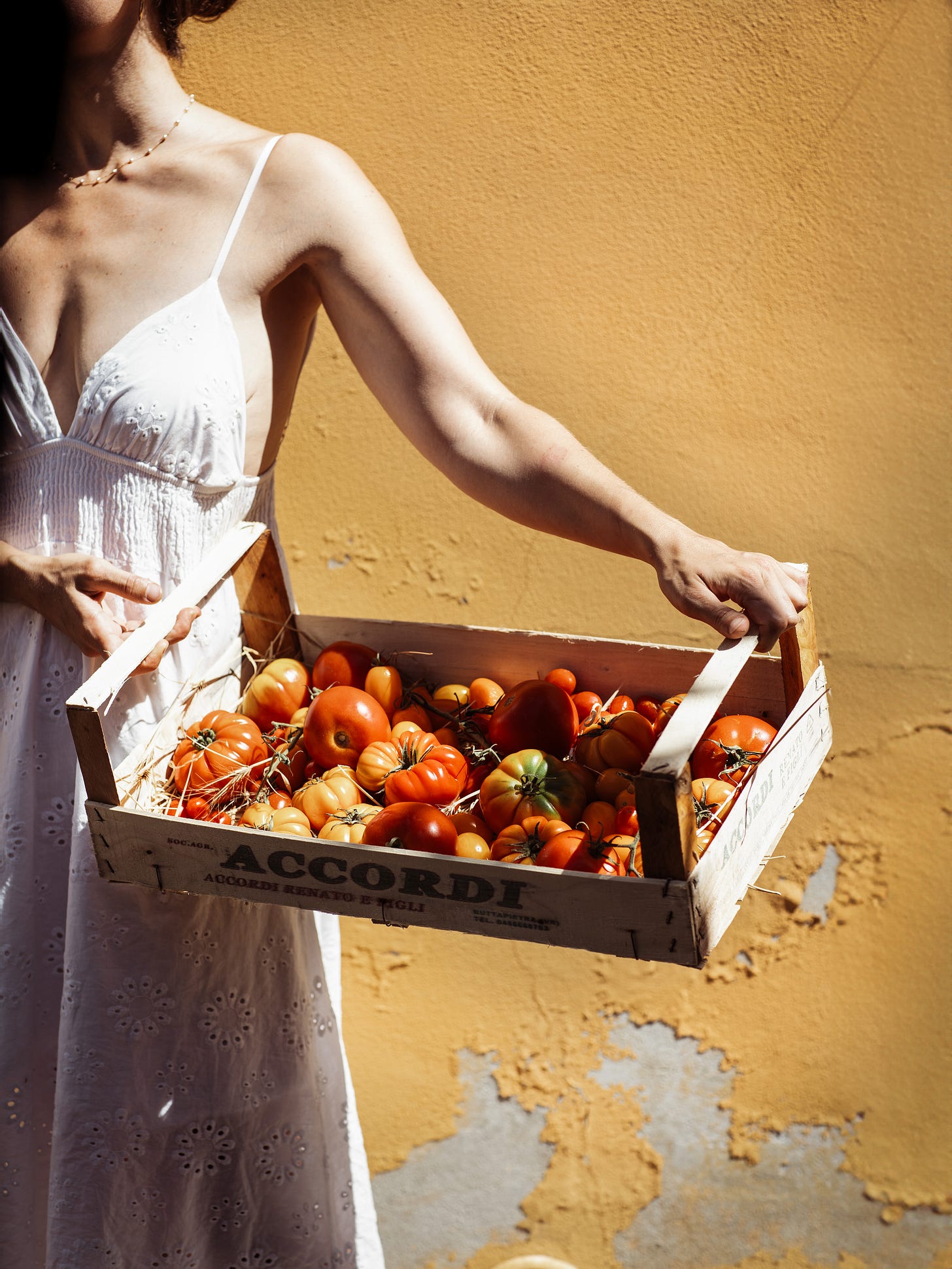A Perfect Bruschetta: A Guide to Buying and Using Raw Tomatoes
How to Make the Best of Summer's Best Fruits, including planting your own.
Just like it happens with people, sometimes you don’t really have the means to realize how good an ingredient can actually be until you had a chance to compare it with the best version of it. I never knew what incredible tomato passata was until a friend brought a bottle of homemade sauce from Abruzzo, never knew how average our mozzarella is until I tasted la Zizzona in Naples, and never knew how excellent the olive oil milled from our trees is - though deemed average by the family - until I had to buy EVOO in a store. Likewise, it is hard to understand how good a tomato can really be until you’ve tasted one from a garden of Southern Europe.
It took me moving to Southern France to really appreciate Italian sauce tomatoes, and it took me a trip back home to really appreciate the quality of a raw French Marmande tomato.
It also took me several trips abroad to understand that not all tomatoes are created equal, and that Italy shares maybe the widest range of varieties available in the world (other than, obviously, American heirloom tomatoes).
So here’s a little guide to navigate tomatoes, and learn to choose and buy them wherever you are in the world. And, at the end, how to make an honest-to-god, proper Italian bruschetta.
SHAPES AND SIZES
Tomatoes come in 3 main shapes: ribbed, round, and elongated. Independently from the shape, they can be quite big (like the ribbed Marmande) or very small (like the elongated datterino).
RIBBED Varieties, big to small: Marmande, Beef heart or beefsteak (Cuore di bue in Italian and Coeur de Boeuf in French), Brandywine, Riccio di Parma, Costoluto…
ROUND Varieties, big to small: Ramato or Grappolo, Otello, Noir de Crimée, Camone, Cherry…
ELONGATED VARIETIES, big to small: San Marzano, Roma, Vesuvio, Perino, Pomodoro del Piennolo, Datterino…
The largest tomatoes are indeed the ribbed Marmande and Coeur de Boeuf, while the smaller are the tiny cherry or datterini.
Heriloom tomatoes also come in a variety of colors, each with their flavor profile.
TOMATOES “da insalata” VS. “Da sugo”
The big dinstinction in Italian tomatoes (as I think in other parts of the Mediterranean) is wether the tomatoes are meant to be used in salads, or cooked into sauce.
Salad tomatoes are any variety of beefy, sweet, ripe to a point (or even slightly underripe) tomatoes with a crunch or bite. Ideally, these tomatoes are not too watery, and will retain texture after being cut. Most heirloom tomatoes, especially the yellow varieties, are perfect salad tomatoes.
In Southern France, I can now find these beautiful yellow beefsteak tomatoes that taste almost like melon. They have a sort of flavor profile that doesn’t make them shine when cooked, but are absolutely marvellous in salads.
Another gem to be found in Southern France, similar to the ones described above is the Marmande tomato, a very large, red, ribbed tomato. Its flavor is incredible. Marmande is a village in the Haute-Garonne, Gascogne, where this tomato is largely cultivated (this is the area where
I might be having a slightly harder time finding very good sauce tomatoes here in France, but the salad tomato game is sky-high.
In Italy, slightly underripe San Marzano tomatoes are a popular tomato salad option, though I think those really shine when fully ripe in sauce and are wasted as salad tomatoes.
Keep reading with a 7-day free trial
Subscribe to L'Appetito (The Appetite) to keep reading this post and get 7 days of free access to the full post archives.






